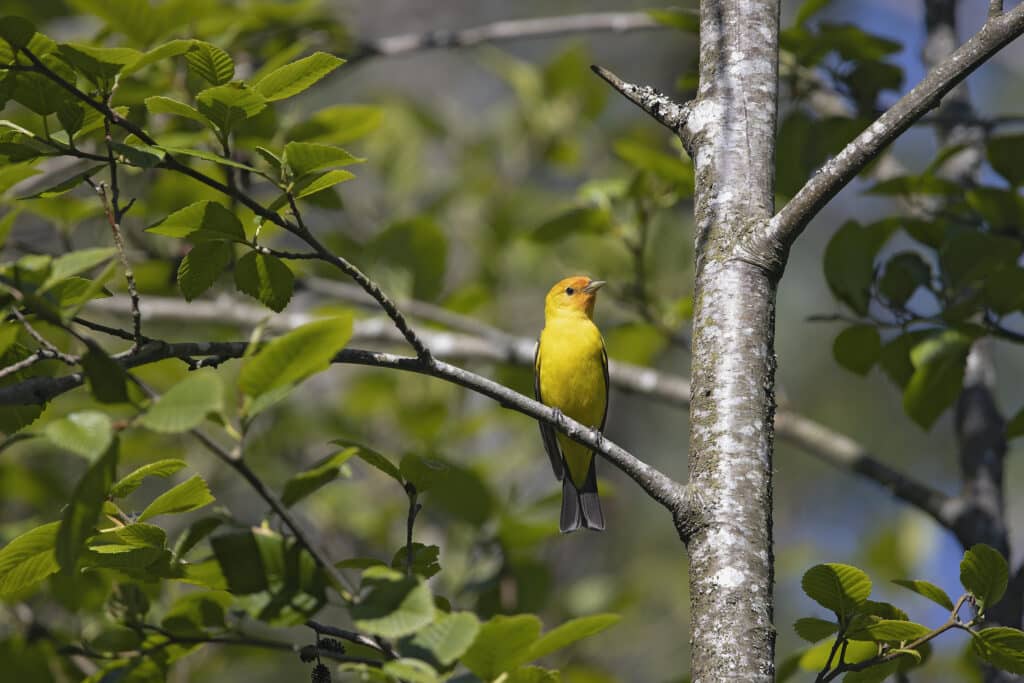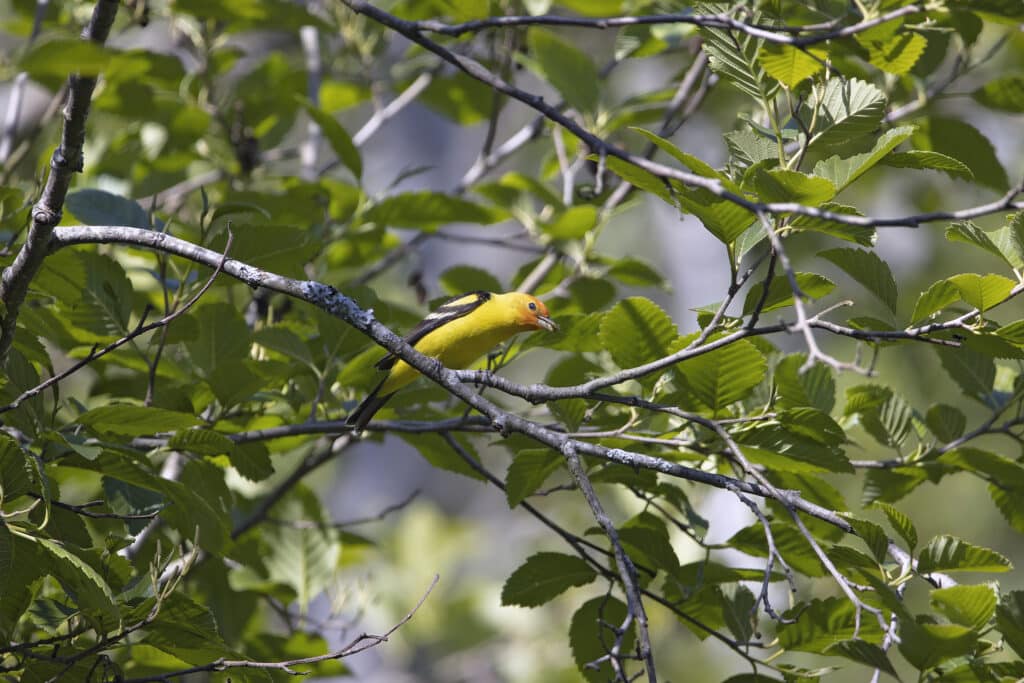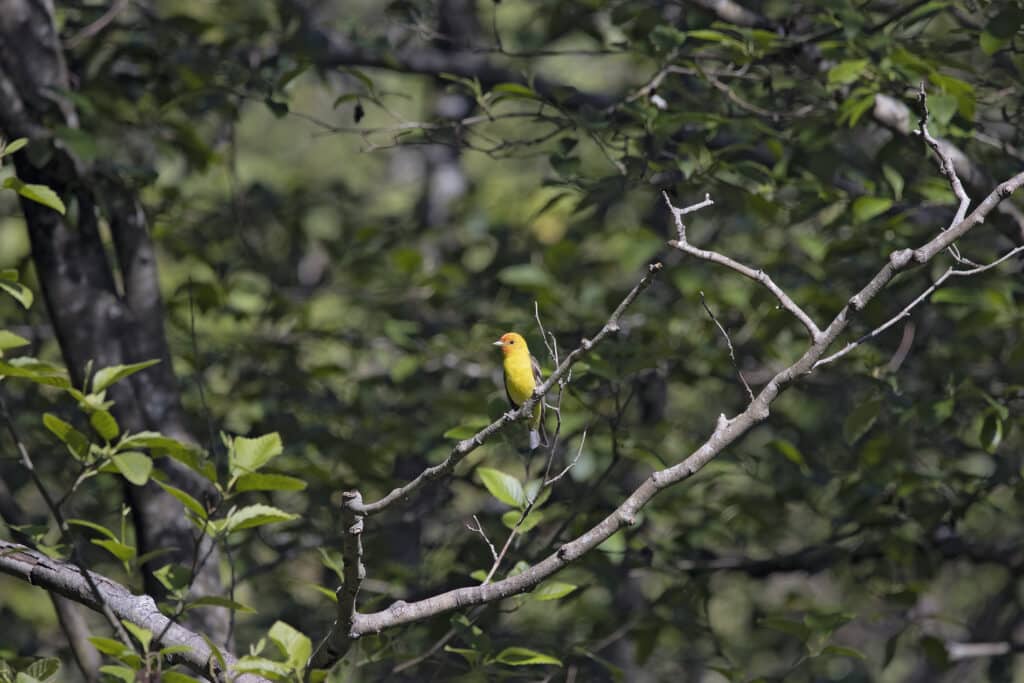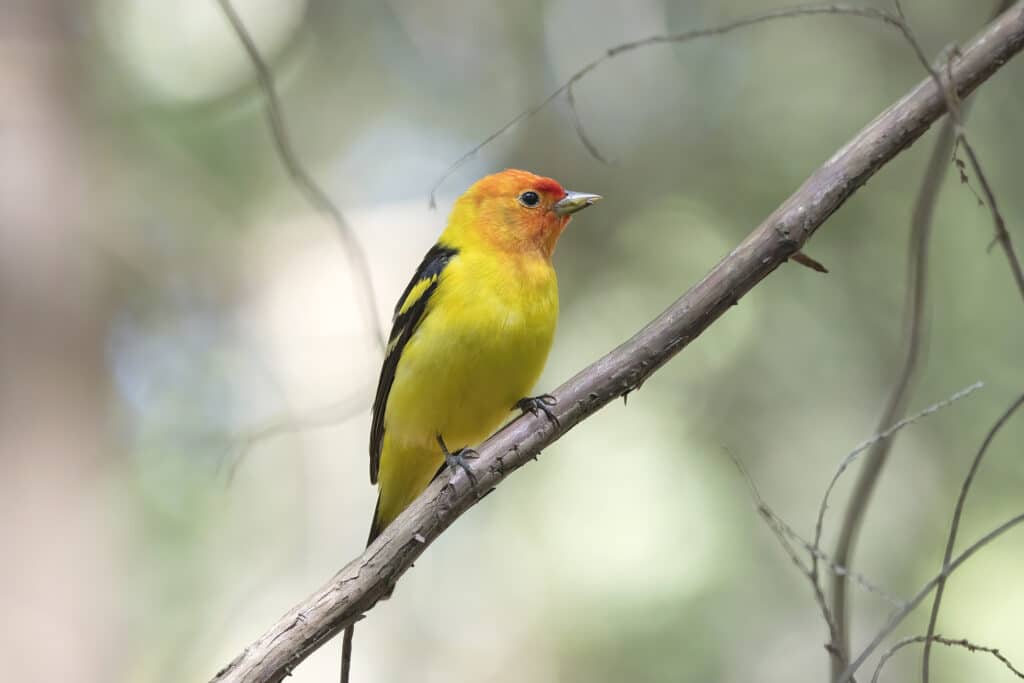Never in a million years would I think that I would get to see a bird as stunning as western tanagers. Seeing one was a pure fluke — I stopped to admire some ferns growing off of a tree trunk, and looked up and just the right moment to see a stunning male high in the treetops. This bird is a large reason that I’d like a serious lens upgrade (which through your support can happen – visit my shop or my support page)
Finding for Western Tanagers
I’ve only managed to see one bird so I don’t have a lot of personal experience with this. All About Birds says to scan the canopies of evergreens for the best results. They come to British Columbia to breed as early as April, and their numbers begin to dwindle in October as they return to Mexico.
Description
Breeding males are stunning, with bright orange faces, yellow bellies, and black wings. Females and immature males have a less impressive olivey-yellow hue. The orange males get during breeding comes from a rare pigment called rhodoxanthin, which they likely get from insects
Feeding Western Tanagers
This tanager is primarily a fruit eater until the breeding season. During breeding, they will eat more and more insects, likely for the extra protein. A part of me also suspects there just isn’t as many local berries and fruit further north as there is in Mexico so the switch is just practical. Of course, I can’t actually back this up with anything.
Update July 19, 2022: I’ve managed to get a few more sightings in, and a few more photos! One curious little bird even came right down to me.





Sources
Like this post?
Thanks for reading! You can support me in making more posts like this by buying me a coffee, visiting my store, and subscribing to my newsletter. Follow me on Instagram for daily posts.


